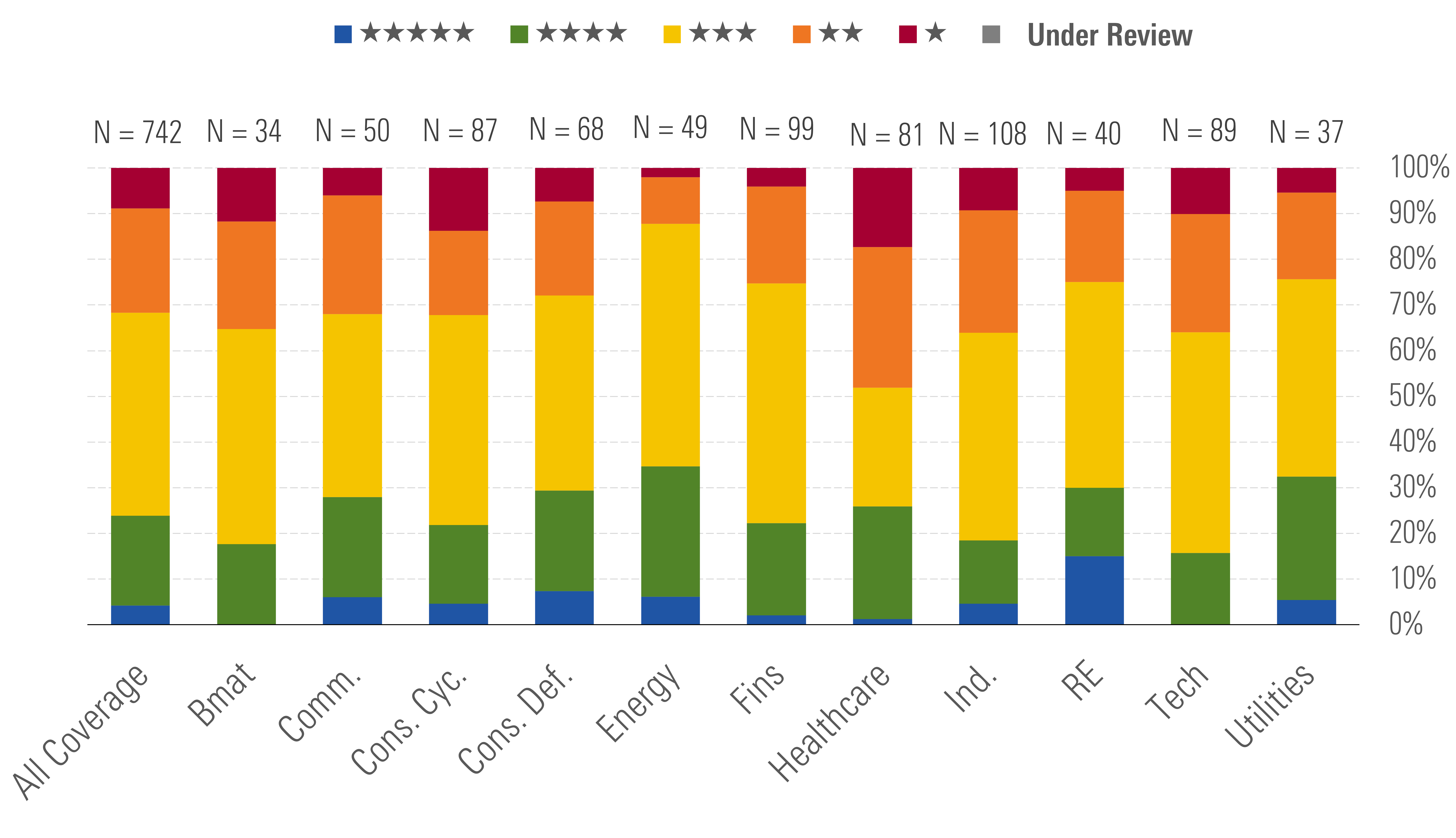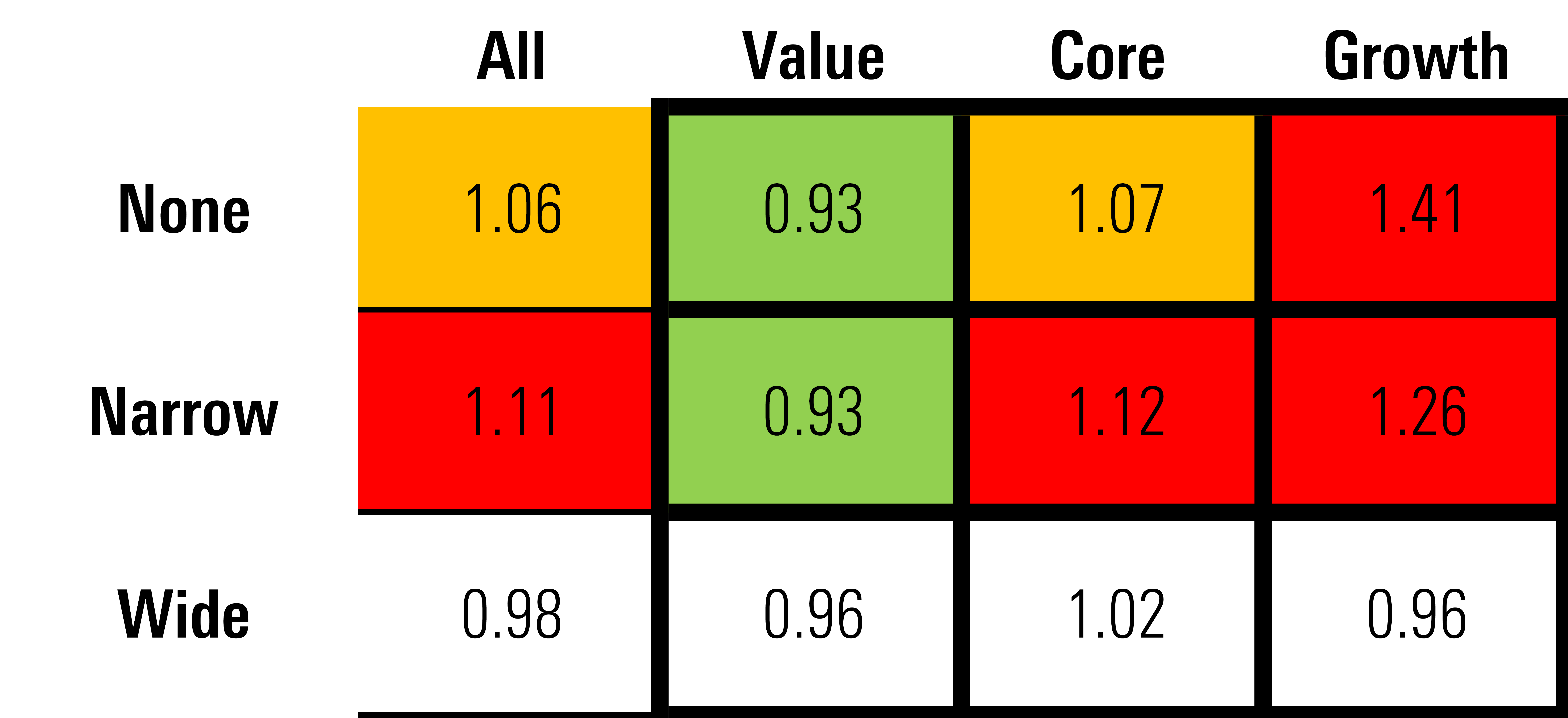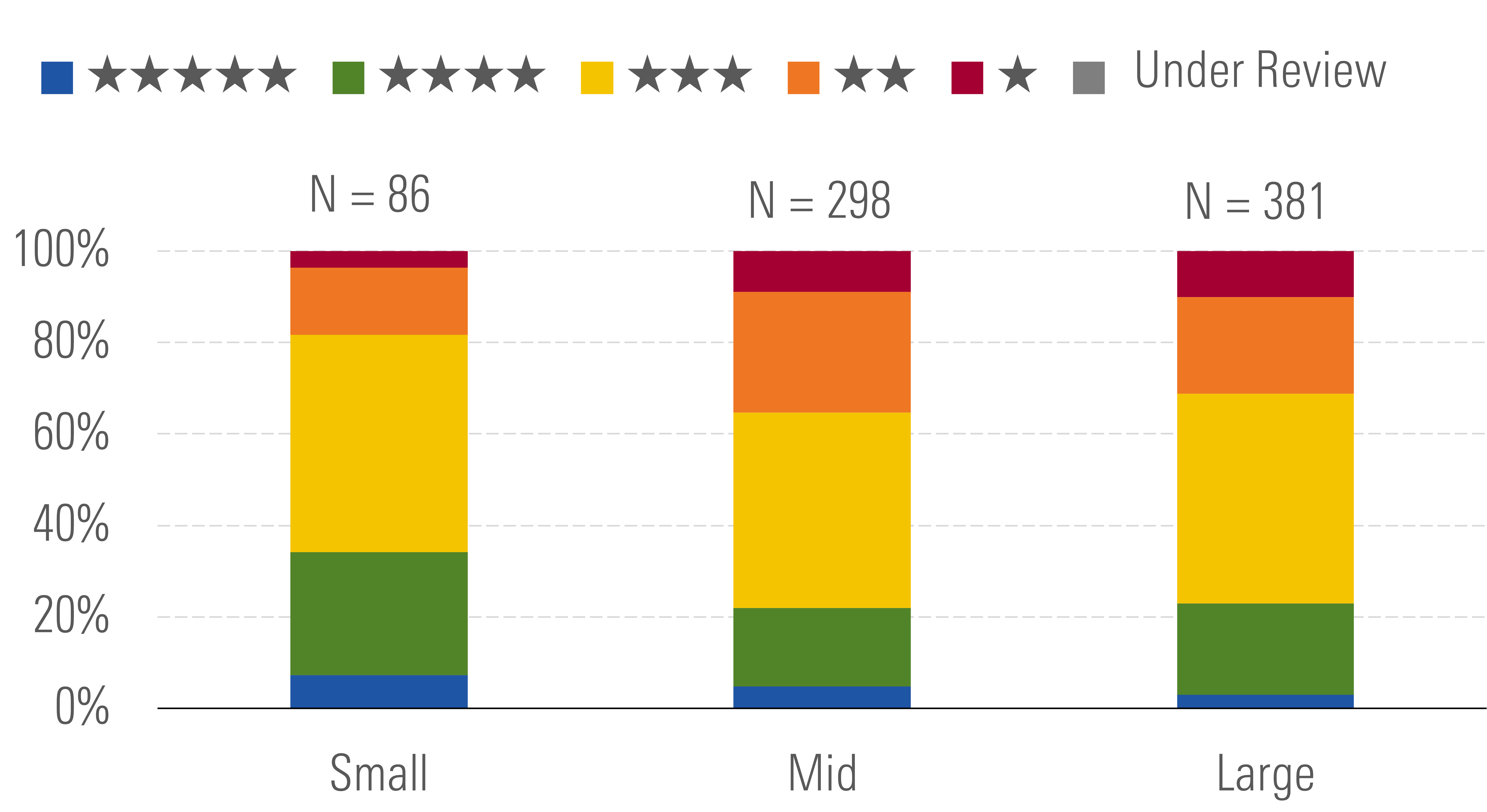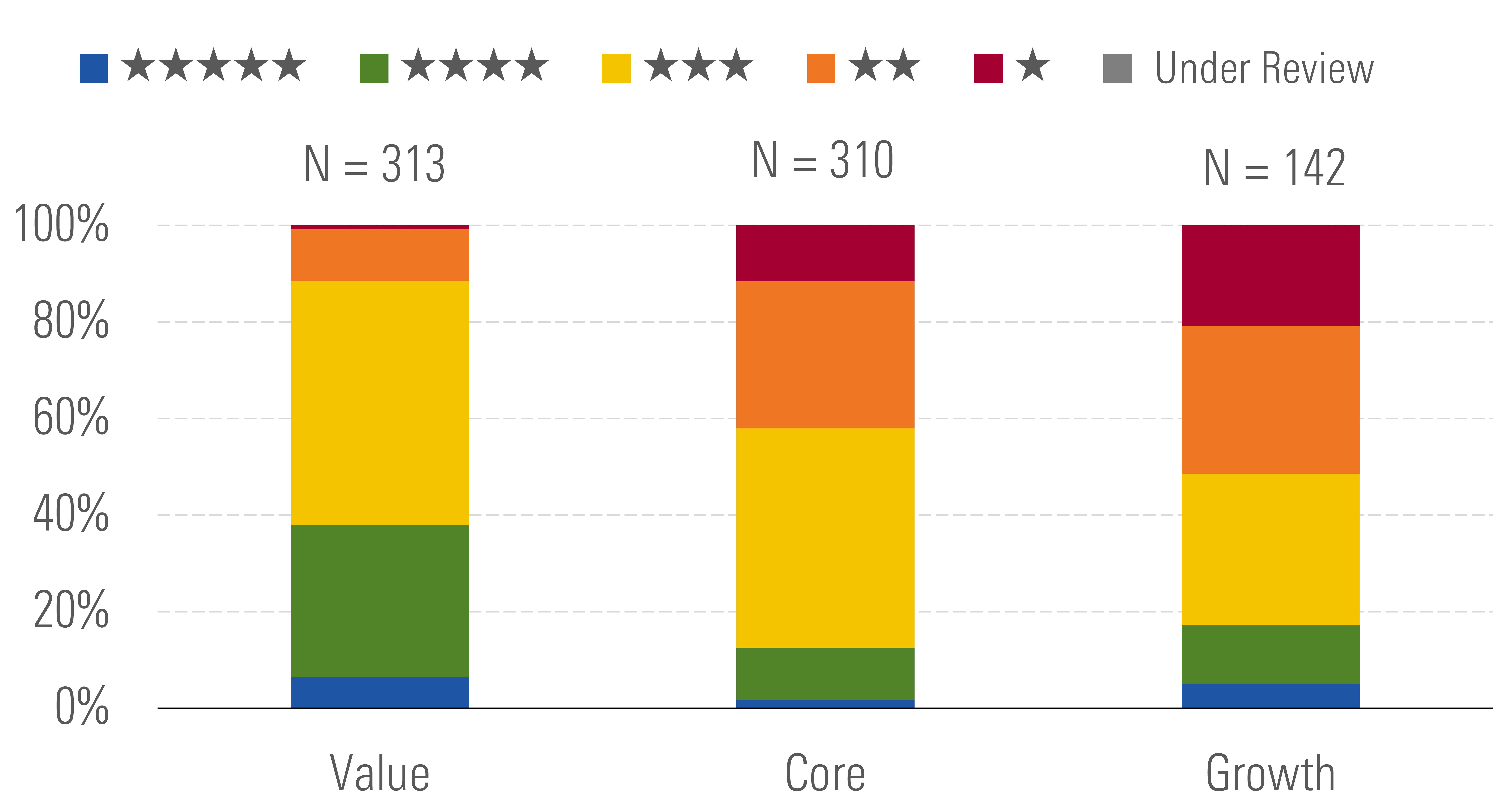Market Outlook: Investors Revive Pandemic Playbook
Best opportunities remain in value and small caps.
Based on a market-weighted composite of our fundamental intrinsic equity valuations, the broad equity markets in North America remain at a 4% premium. Yet, while the overall premium held steady from last quarter, the underlying valuation dynamics changed as a resurgence in coronavirus cases over the summer led many investors to return to their 2020 pandemic playbook.
Growth and large-cap stocks surged in July and August as investors rotated out of value and small-cap stocks. As such, value and small-cap stocks have become more undervalued. By individual stock, the rotation also led to an increase in the number of undervalued opportunities. The percentage of our coverage with 4- or 5-star ratings has doubled to 24% from last quarter. With new delta variant cases declining, we expect economic normalization to resume after the summer slowdown. Valuation for stocks with wide moats remains attractive.
- Economic normalization slowed in the third quarter as delta variant cases rose in July and August. New cases peaked in early September, and the downward trend should spur a resumption of normalization.
- Energy stocks were pummeled in July, but we continue to view it as the most undervalued sector.
- Growth stocks trounced value and core stocks in the third quarter. However, we expect that the ongoing economic recovery continues to bode well for value stocks.
Exhibit 1: Broad Equity Market Remains at a 4% Premium

Source: Morningstar
Wishful Thinking
Investors entered 2021 with high hopes that the worst of the pandemic was behind us. Equity markets surged during the first half of the year, with strong outperformance across value and small-cap categories. However, the delta variant this summer sent many investors back to their 2020 playbook. As such, large-cap and growth categories surged in July and August as investors rotated out of small-cap and value categories. The market retreated in September as the combination of broad market overvaluation and acknowledgement that the Fed will begin to taper its asset purchase program this fall took its toll on stocks.
Exhibit 2: Value Stocks Most Attractive, Especially Compared With Rest of Market

Source: Morningstar
While the delta variant may have slowed economic normalization, it did not halt the trend, and we continue to forecast strong economic growth for the rest of this year and next. Currently, we view the valuation for the broad U.S. market to be in higher the end of the fairly valued range. Breaking down our valuations into the Morningstar Style Box, we continue to see the best value for investors in the value category, which according to a composite of our fundamental equity valuations are undervalued, especially relative to core and growth categories, which remain overvalued. Small-cap stocks are the most undervalued, with the undervaluation concentrated in value and growth categories, whereas core small-cap stocks are at the high end of our fairly valued range.
Exhibit 3: Value Moats Undervalued, but Wide Moats Remain Relatively Attractive

Source: Morningstar
Also, valuations for companies with wide economic moat ratings are more attractively valued than those with narrow or no moat ratings. Morningstar's Wide Moat Focus Index has outperformed the broad market this year, and we continue to see value in high-quality companies relative to the market. Although, valuation in the value category is low enough that many of those with narrow or no moat ratings are trading at attractive valuations. While we continue to forecast that inflation will moderate in 2022, we expect that wide-moat companies are generally better positioned to pass through cost increases if inflation persists. Additionally, we would expect wide-moat stocks to hold their value better during any potential market corrections.
Exhibit 4: We Cover Fewer Small-Cap Stocks, but They Offer the Highest Percentage of Value

Source: Morningstar
Among our sector valuations, we continue to calculate that energy is the most undervalued by far, followed by consumer cyclical. The communications sector remains at the lower end of our fair value range, and following a September sell-off, the basic materials, consumer defensive, and utility sectors are now trading within our fair value range.
Exhibit 5: Value Contains the Highest Percentage of Undervalued Stocks

Source: Morningstar

/s3.amazonaws.com/arc-authors/morningstar/54f9f69f-0232-435e-9557-5edc4b17c660.jpg)
/cloudfront-us-east-1.images.arcpublishing.com/morningstar/WC6XJYN7KNGWJIOWVJWDVLDZPY.png)
/cloudfront-us-east-1.images.arcpublishing.com/morningstar/HHSXAQ5U2RBI5FNOQTRU44ENHM.jpg)
/cloudfront-us-east-1.images.arcpublishing.com/morningstar/737HCNGRFLOAN3I7RKGB7VPEKQ.png)
:quality(80)/s3.amazonaws.com/arc-authors/morningstar/54f9f69f-0232-435e-9557-5edc4b17c660.jpg)